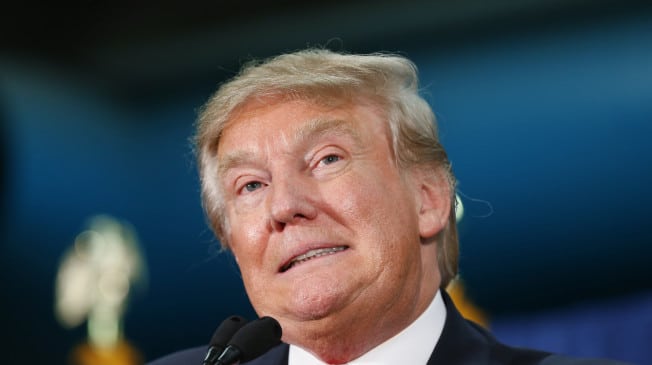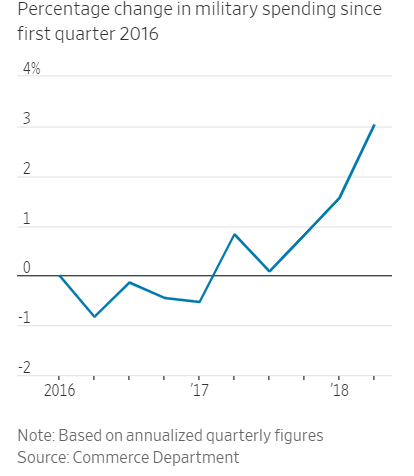It’s all about catering to the military-industrial-complex. There is a big spender in the White House who loves the military.
In the goofy land of highly questionable macro measurements, the U.S. economy has expanded at a 2.9 percent annual rate since April of 2017, according to the Commerce Department.
Faster government spending, (government spending is more accurately measured than other parts of the economy), accounted for nearly half of the acceleration, according to a Wall Street Journal analysis.
And get this, defense shifted from contracting at a 2.1 percent annual rate between June 2009 and March 2017, to growing at a 2.9 percent rate since April 2017. The turnaround added 0.21 percentage points on average to the nation’s overall economic growth rate, according to Commerce Department figures.
Defense outlays grew 6 percent in the fiscal year that ended Sept. 30, thanks in part to a bipartisan budget agreement to boost government spending this year and next by nearly $300 billion above limits set in a 2011 law, including $165 billion more for military.
Click for larger.
“I would expect that, with the increase in the defense discretionary caps, that its contribution is going to increase, and in fact it will be leading overall GDP growth by mid-2019,” said Gus Faucher, chief economist at PNC Financial Services Group, reports WSJ.
WSJ notes:
Lockheed Martin Corp. , the world’s largest defense contractor, said Tuesday it expects revenue to increase up to 6% in 2019 as it boosts production of missiles and F-35 combat jets. The company reported a $1.47 billion profit for the quarter ending Sept. 30, compared with $963 million a year earlier. Its order backlog rose to $109 billion.
Boeing Co. , the world’s largest aerospace company by sales, raised its revenue and profit outlook for the year, thanks in part to strong demand for defense projects. The company won a trio of Pentagon contracts in recent weeks, after four years of sales declines in its defense unit.
Reprinted with permission from Economic Policy Journal.



